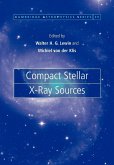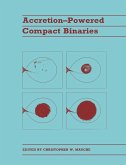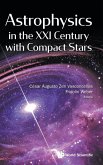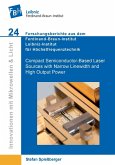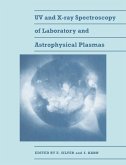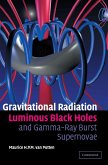Reference on astrophysical compact objects that emit X-rays, for graduate students and researchers.
X-ray astronomy is the prime available window on astrophysical compact objects: black holes, neutron stars and white dwarfs. In the last ten years new observational opportunities have led to an explosion of knowledge in this field. This book provides a comprehensive overview of the astrophysics of compact objects that emit X-rays. Sixteen chapters written by the foremost experts in the field cover the observations and the astrophysical interpretation of these objects. Topics covered include binary systems, gamma ray burst sources, soft gamma ray repeaters, anomalous X-ray pulsars, super-soft sources, and enigmatic fast X-ray transients. Further chapters are dedicated to isolated neutron stars and the X-ray source populations of globular clusters. The properties of X-ray binaries are discussed in depth in chapters on quasi-periodic oscillations and related aperiodic X-ray variability, X-ray bursts, black holes, and relativistic jets. This is a valuable reference for both graduate students and active researchers.
Review quote:
From reviews of X-ray Binaries, edited by Walter H. G. Lewin, Jan van Paradijs and Edward P. J. van den Heuvel: '- packed with information, and so beautifully presented by CUP - a must for your bookshelf and every astronomical library. I have already made this book required reading for my graduate students.' Phil Charles, The Observatory
'- a very good, detailed and comprehensive written review on X-ray binaries.' Reviews of Astronomical Tools
'- the topics are well chosen and fairly distinct, providing an extremely useful summary of current research - If the space agencies are wondering why they shoud be planning now to replace XMM-Newton, Chandra, and RXTE, they should read this book. - a good buy for libraries and essential background reading for students and their supervisors.' The Observatory
Table of contents:
1. Accreting neutron stars and black holes: a decade of discoveries D. Psaltis; 2. Rapid X-ray variability M. van der Klis; 3. New views of thermonuclear bursts T. Strohmayer and L. Bildsten; 4. Black hole binaries J. McClintock and R. Remillard; 5. Optical, ultraviolet and infrared observations of X-ray binaries P. Charles and M. Coe; 6. Fast X-ray transients and X-ray flashes J. Heise and J. in 't Zand; 7. Isolated neutron stars V. Kaspi, M. Roberts and A. Harding; 8. Globular cluster X-ray sources F. Verbunt and W. Lewin; 9. Jets from X-ray binaries R. Fender; 10. X-Rays from cataclysmic variables E. Kuulkers, A. Norton, A. Schwope and B. Warner; 11. Super soft sources P. Kahabka and E. van den Heuvel; 12. Compact stellar X-ray sources in normal galaxies G. Fabbiano and N. White; 13. Accretion in compact binaries A. King; 14. Soft gamma repeaters and anomalous X-ray pulsars: magnetar candidates P. Woods and C. Thompson; 15. Cosmic gamma-ray bursts, their afterglows, and their host galaxies K. Hurley, R. Sari and S. Djorgovski; 16. Formation and evolution of compact stellar X-ray sources T. Tauris and E. van den Heuvel.
Hinweis: Dieser Artikel kann nur an eine deutsche Lieferadresse ausgeliefert werden.
X-ray astronomy is the prime available window on astrophysical compact objects: black holes, neutron stars and white dwarfs. In the last ten years new observational opportunities have led to an explosion of knowledge in this field. This book provides a comprehensive overview of the astrophysics of compact objects that emit X-rays. Sixteen chapters written by the foremost experts in the field cover the observations and the astrophysical interpretation of these objects. Topics covered include binary systems, gamma ray burst sources, soft gamma ray repeaters, anomalous X-ray pulsars, super-soft sources, and enigmatic fast X-ray transients. Further chapters are dedicated to isolated neutron stars and the X-ray source populations of globular clusters. The properties of X-ray binaries are discussed in depth in chapters on quasi-periodic oscillations and related aperiodic X-ray variability, X-ray bursts, black holes, and relativistic jets. This is a valuable reference for both graduate students and active researchers.
Review quote:
From reviews of X-ray Binaries, edited by Walter H. G. Lewin, Jan van Paradijs and Edward P. J. van den Heuvel: '- packed with information, and so beautifully presented by CUP - a must for your bookshelf and every astronomical library. I have already made this book required reading for my graduate students.' Phil Charles, The Observatory
'- a very good, detailed and comprehensive written review on X-ray binaries.' Reviews of Astronomical Tools
'- the topics are well chosen and fairly distinct, providing an extremely useful summary of current research - If the space agencies are wondering why they shoud be planning now to replace XMM-Newton, Chandra, and RXTE, they should read this book. - a good buy for libraries and essential background reading for students and their supervisors.' The Observatory
Table of contents:
1. Accreting neutron stars and black holes: a decade of discoveries D. Psaltis; 2. Rapid X-ray variability M. van der Klis; 3. New views of thermonuclear bursts T. Strohmayer and L. Bildsten; 4. Black hole binaries J. McClintock and R. Remillard; 5. Optical, ultraviolet and infrared observations of X-ray binaries P. Charles and M. Coe; 6. Fast X-ray transients and X-ray flashes J. Heise and J. in 't Zand; 7. Isolated neutron stars V. Kaspi, M. Roberts and A. Harding; 8. Globular cluster X-ray sources F. Verbunt and W. Lewin; 9. Jets from X-ray binaries R. Fender; 10. X-Rays from cataclysmic variables E. Kuulkers, A. Norton, A. Schwope and B. Warner; 11. Super soft sources P. Kahabka and E. van den Heuvel; 12. Compact stellar X-ray sources in normal galaxies G. Fabbiano and N. White; 13. Accretion in compact binaries A. King; 14. Soft gamma repeaters and anomalous X-ray pulsars: magnetar candidates P. Woods and C. Thompson; 15. Cosmic gamma-ray bursts, their afterglows, and their host galaxies K. Hurley, R. Sari and S. Djorgovski; 16. Formation and evolution of compact stellar X-ray sources T. Tauris and E. van den Heuvel.
Hinweis: Dieser Artikel kann nur an eine deutsche Lieferadresse ausgeliefert werden.


